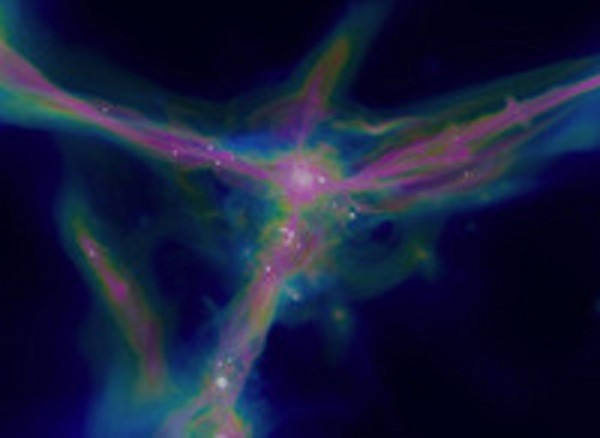Astronomers Find ‘Pristine’ Gas Formed Minutes After Big Bang

Astronomers have discovered two clouds of gas in the same state as they were in just moments after the Big Bang.
Unlike everything else in the universe, the two clouds never combined with elements that were later formed in stars. Instead, each consists only of the light elements that occurred in the Big Bang some 14 billion years ago.
Nuclear reactions created the three lightest elements - hydrogen, helium, and a tiny amount of lithium - which stars then converted into heavier elements such as carbon and oxygen.
This new discovery is the first time astronomers have found a star or cloud made solely of these three lighter elements. All known stars and gas clouds contain at least a small amount of "metals", the term astronomers use to describe any element that is heavier than helium, including oxygen and carbon.
"As hard as we've tried to find pristine material in the universe, we have failed until now," says J Xavier Prochaska, professor of astronomy and astrophysics at the University of California, Santa Cruz.
"This is the first time we've observed pristine gas uncontaminated by heavier elements from stars."
"It's quite exciting, because it's the first evidence that fully matches the composition of the primordial gas predicted by the big bang theory," says Michele Fumagalli of the University of California, Santa Cruz, lead author of a paper on the findings published online in Science today.
"Their chemical composition is unusual," says Fumagalli. "This gas is of primordial composition, as it was produced during the first few minutes after the Big Bang."
The researchers discovered the clouds of gas using the HIRES spectrometer on the Keck I Telescope at the M Keck Observatory in Hawaii.
Previously, the lowest abundances of metals in the universe were around one-thousandth of the sun's "metallicity." At the other end of the scale, stars and gas with the highest metallicities are almost ten times that of the sun.
"People had thought there was a 'floor' to metallicity, that nothing could be less than one-thousandth the solar enrichment. That's because the metals produced in galaxies were so widely dispersed in the universe," Fumagalli said.
"So this was unexpected. It challenges our ideas about how metals are dispersed from the stars that produce them."
The paper was published in the journal Science on Nov. 10.
© Copyright IBTimes 2025. All rights reserved.






















